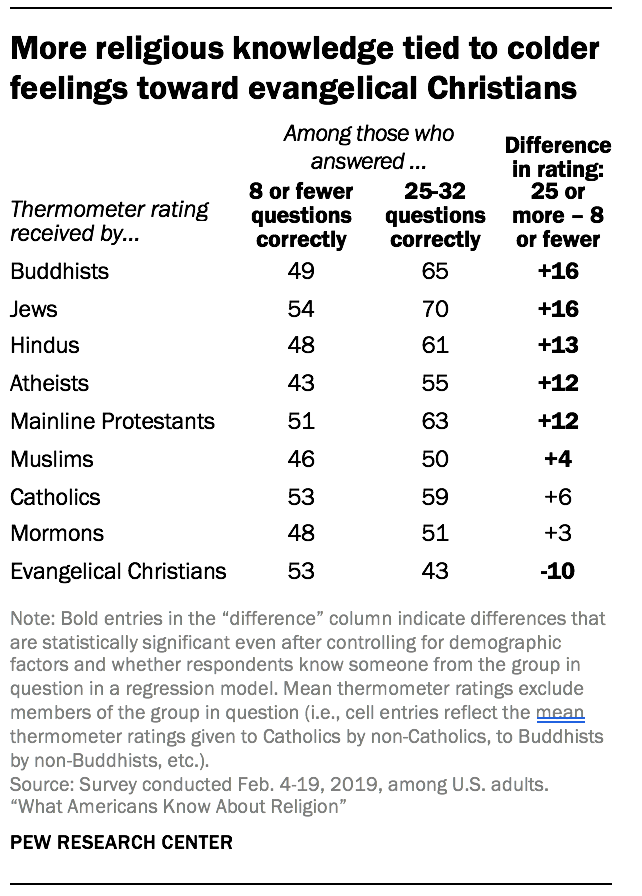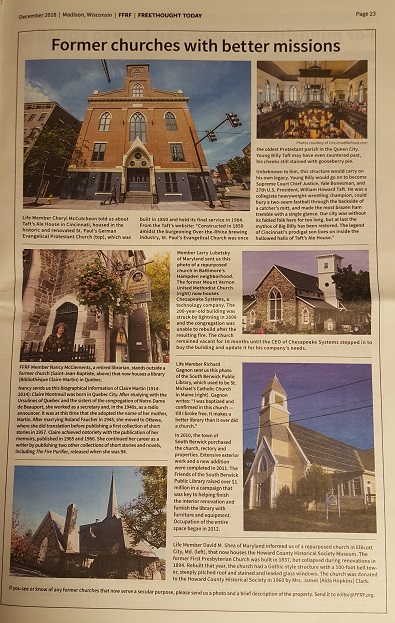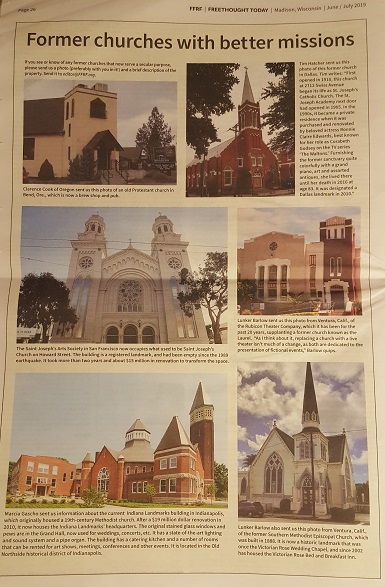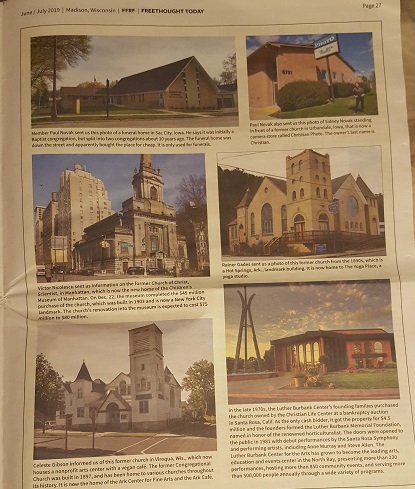I wrote last week about how the world is becoming more secular, and the United States isn’t an exception. There’s a constant stream of new evidence to reinforce the long-term trend of religious affiliation falling and nonbelief rising. One such is this June 2019 poll from the Wall Street Journal:
The steady, long-term decline in church attendance is confirmed in the most recent Wall Street Journal/NBC News poll. Just 29% of Americans now say they attend religious services once a week or more often. That is down from 41% in 2000.
At the same time, the share of Americans saying they never attend religious services has risen to 26%, almost double the 14% who said so back in 2000. The rise in churchlessness is most dramatic among young Americans. Among those aged 18 to 34, the rate saying they never attend religious services previously was no different from the national rate; now the share of these younger Americans who never attend religious services has more than doubled, to 36%.
As the article notes, this has huge implications for the American political landscape. Until the 1960s, there was no real difference in church attendance among the parties. But in the 1980s, Republicans chose to make Christian conservatives the bedrock of their coalition. Rebranding as the “Moral Majority”, they proclaimed themselves the only people on earth who understood God’s will, which meant that anyone who opposed them was a sinner and an enemy of God.
It was a devil’s bargain. In the short term, it was a winning strategy, firing up their followers and filling them with the passion of self-righteousness. But in the long term, it cemented Christianity’s reputation to the cruelty and bigotry of right-wing partisan politics. Now, as the country becomes more diverse and more secular, social conservatives are becoming outright white supremacists, and they’re dragging Christianity down with them.
You can see this societal sea change playing out in a new Gallup poll which finds that Americans’ confidence in organized religion has sunk to 36%, an all-time low:
Confidence in organized religion topped confidence in all other institutions from 1973 to 1985, and, even after falling amid televangelist scandals in the 1980s, it registered at the majority level consistently until 2001. After the Boston Globe’s 2002 expose revealed Catholic church leaders were aware of and did not take strong action to stop serial sex abuse by priests, confidence in organized religion dropped sharply to 45%. It recovered slightly in the years after the scandal broke, hovering around the 50% mark. Between 2010 and 2017, it regularly registered in the 40s. Since then, in 2018 and 2019, Americans’ confidence in religion has been below the 40% mark.
It’s true that the awful child-abuse coverup perpetrated by Catholic hierarchs has stained that church’s reputation. But this doesn’t explain why public trust in organized religion in general is plumbing new lows. Why wasn’t the fallout limited to Catholicism? The better explanation is that the public has noticed how America’s largest religious groups have embraced a narrow, exclusionary political agenda – cruelty to the poor and to immigrants, hatred of racial minorities, patriarchal attitudes toward women, and hypocritical worship of wealth and power – and millions of people have decided they want nothing to do with this.
Here’s a powerful piece of evidence for that hypothesis. A July 2019 Pew survey, “What Americans Know About Religion“, found that knowing more about the basic beliefs of a religion correlates to warmer feelings toward that religion’s adherents. This makes sense from a humanist moral standpoint, since we’d expect that bigotry is founded on ignorance and that greater understanding usually leads to tolerance.
But there’s one exception to that pattern – and no, it’s not atheism. It’s evangelical Christianity. People who know more about evangelicals like them less:

The simplest explanation is that informed people are correctly perceiving the noxious attitudes and viperish cruelty that permeate evangelical Christianity. And they’re acting accordingly, heading for the exits en masse.
As I wrote in “The Twilight of American Evangelicals“, evangelicals are hurtling toward a demographic brick wall as young people slip through their fingers. And honest conservatives see this too. The conservative author Peter Wehner, in an article about how evangelicals have become a Trumpist cult, is dreading what the next generation could bring:
“We’re losing an entire generation. They’re just gone. It’s one of the worst things to happen to the Church.”
Like the slow creep of sea-level rise, this prediction is already coming true. The Southern Baptists, America’s largest Protestant denomination and perhaps the most fiercely conservative and partisan, have seen membership drop to a thirty-year low:
The nation’s biggest Protestant denomination isn’t as big as it used to be, according to its Annual Church Profile (ACP), released today. Membership fell to 14.8 million in 2018 — its first time below 15 million since 1989 and the lowest it’s been since 1987.
…Overall, Southern Baptists’ namesake practice has reached a historic low of 246,000 baptisms a year — around how many people were dunked by the denomination back in the 1940s, when it was less than half its current size.
If you want to know what America’s fading faith looks like in more tangible terms, the Freedom from Religion Foundation’s newsletter Freethought Today runs a feature on churches that are closing down and being converted to other uses. Here’s a sampling:
Besides the shrinking denominations and the closing churches, we can see this trend in personal terms: in high-profile deconversions like Josh Harris, or Marty Sampson, formerly of the Hillsong megachurch. Whatever the personal factors that played into these individual stories, people like them are on the leading edge of a wave, and we can expect more deconversions like them in the years to come.


